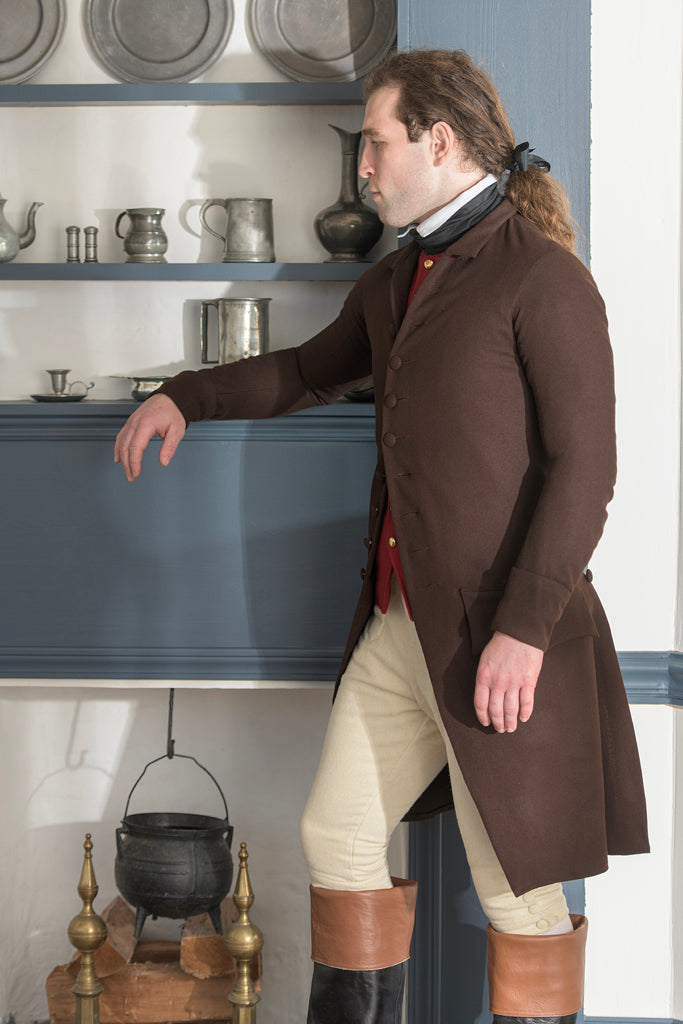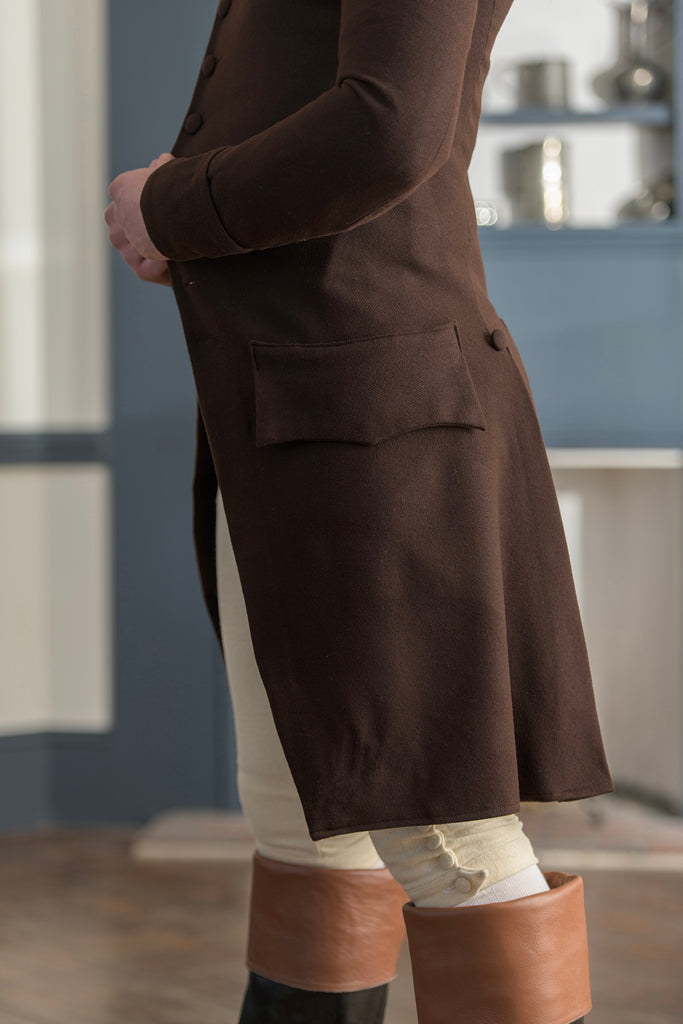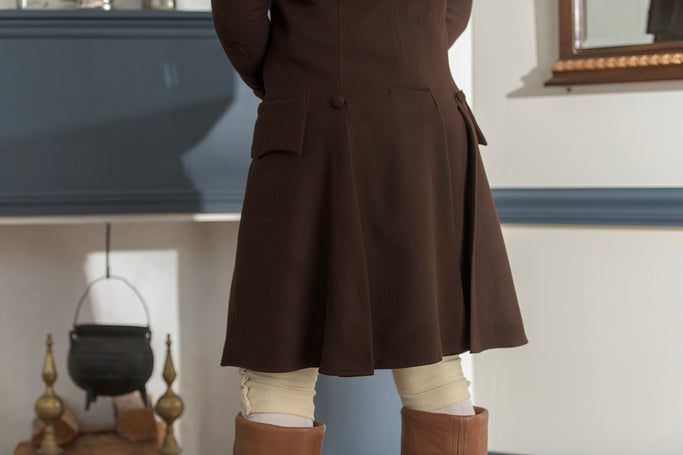-
Throughout much of the second half of the eighteenth century, the frock coat made of wool, linen, or a combination of fibers, became the predominant style of outer garment for everyday wear for men of all classes. By the 1770’s the “straight bodied coat” gave way to the more rounded front line with a narrower back featured here.
This frock coat, like the originals of the 1770’s is noted for its simplistic style. Buttonholes were often little longer than the buttons. Cuffs and pocket flaps were frequently devoid of buttonholes, with or without corresponding buttons. Pocket flaps could be scalloped or oblong. This coat utilizes the plain scalloped pocket design with buttonless cuffs for the sleek silhouette. The falling collar seen here is also indicative of fashion in the 1770s.
The pattern for which these coats are based is established on an unlined tobacco brown linen frock coat with self-covered wooden buttons and flapped pockets, c. 1780, in a private collection in Bristol, RI, and an unlined tobacco brown linen jacket with pewter buttons and welted pockets, c. 1770, in the collections of the Connecticut Historical Society, Hartford, CT. Both of these garments were carefully made, with overcast seams to prevent raveling, and both were made with single thickness cuffs. Estate inventories suggest that the predominant colors for these garments, at least in New England, were brown and blue.
1770s Unlined Frock Coat by Henry Cooke | Historical Costume Services
-
Historic Reproduction

















